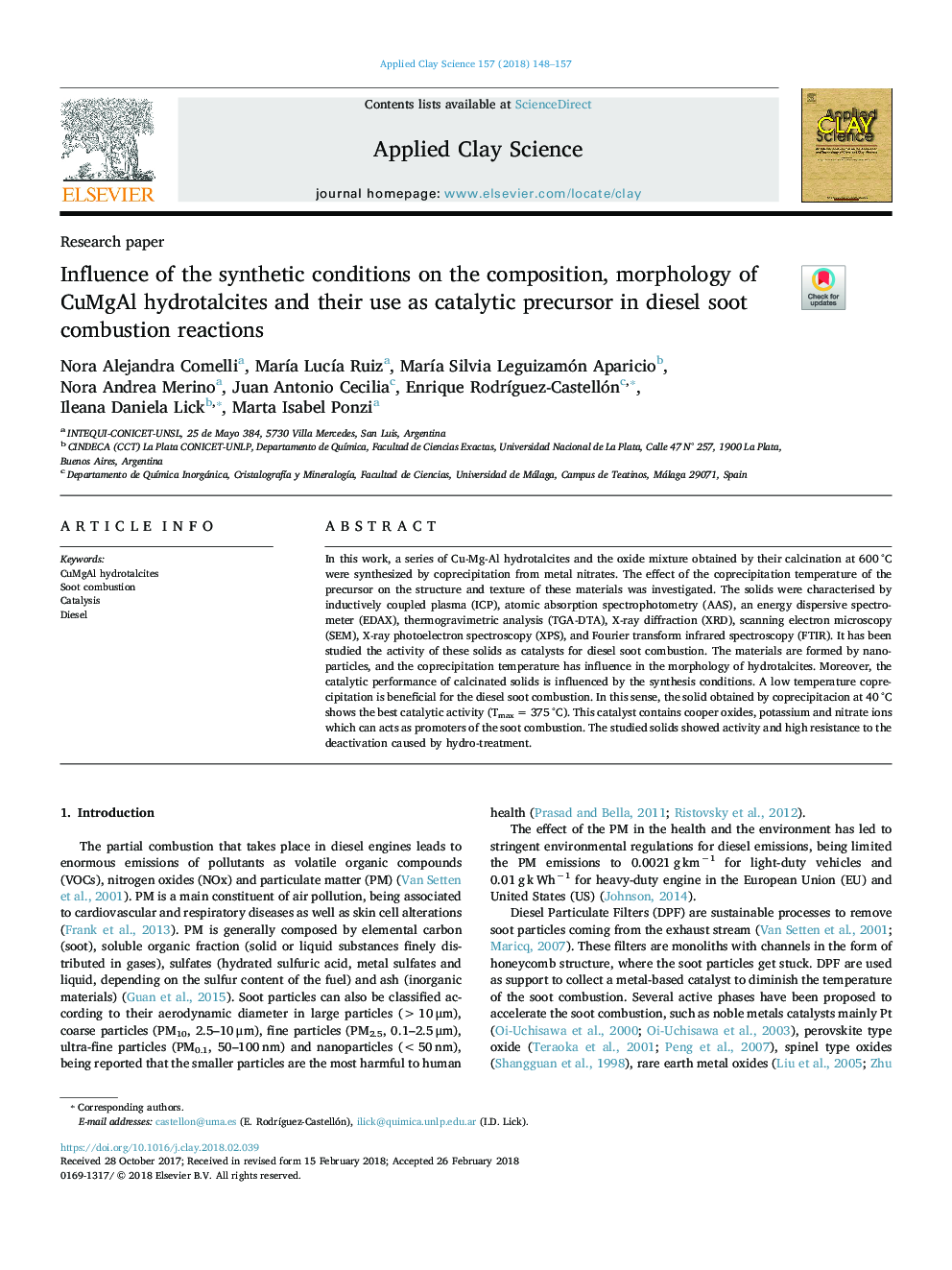| Article ID | Journal | Published Year | Pages | File Type |
|---|---|---|---|---|
| 8046057 | Applied Clay Science | 2018 | 10 Pages |
Abstract
In this work, a series of Cu-Mg-Al hydrotalcites and the oxide mixture obtained by their calcination at 600â¯Â°C were synthesized by coprecipitation from metal nitrates. The effect of the coprecipitation temperature of the precursor on the structure and texture of these materials was investigated. The solids were characterised by inductively coupled plasma (ICP), atomic absorption spectrophotometry (AAS), an energy dispersive spectrometer (EDAX), thermogravimetric analysis (TGA-DTA), X-ray diffraction (XRD), scanning electron microscopy (SEM), X-ray photoelectron spectroscopy (XPS), and Fourier transform infrared spectroscopy (FTIR). It has been studied the activity of these solids as catalysts for diesel soot combustion. The materials are formed by nanoparticles, and the coprecipitation temperature has influence in the morphology of hydrotalcites. Moreover, the catalytic performance of calcinated solids is influenced by the synthesis conditions. A low temperature coprecipitation is beneficial for the diesel soot combustion. In this sense, the solid obtained by coprecipitacion at 40â¯Â°C shows the best catalytic activity (Tmaxâ¯=â¯375â¯Â°C). This catalyst contains cooper oxides, potassium and nitrate ions which can acts as promoters of the soot combustion. The studied solids showed activity and high resistance to the deactivation caused by hydro-treatment.
Keywords
Related Topics
Physical Sciences and Engineering
Earth and Planetary Sciences
Geochemistry and Petrology
Authors
Nora Alejandra Comelli, MarÃa LucÃa Ruiz, MarÃa Silvia Leguizamón Aparicio, Nora Andrea Merino, Juan Antonio Cecilia, Enrique RodrÃguez-Castellón, Ileana Daniela Lick, Marta Isabel Ponzi,
